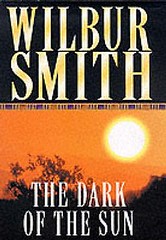You Can’t Read That! is a periodic post featuring banned book reviews and news roundups.

YCRT! News & Commentary:
Happy news from Sierra Vista, Arizona: Dreaming in Cuban, mentioned in my last YCRT! post, will not be banned after all.
Neil Gaiman’s Neverwhere removed from Alamogordo NM high school after parental complaint. Cave-in message from the principal to faculty includes this statement: “From here forward, if you are reading any material that has a controversial issues [sic] or adult language/content, please send a letter home to parents about that specific book and what the content is.”
From the Washington Post’s blog, an excellent article on censorship by text search, “… where you look for something to be offended by and find it nestled at the bottom of page 108.”
Eight-year-old visits a bookstore and complains about sexist children’s books; bookstore responds by moving the books to a “less prominent area of the children’s section.”
Louisiana parish school district bans To Kill a Mockingbird in 2001, then suffers institutional memory loss. When teachers are discovered to be teaching the book again in 2013, the district reimposes the ban.
YCRT! Banned Book Review:
I dug up one of my old book reviews after reading a post by a woman who couldn’t finish reading Gone with the Wind because it was “too racist.”
Wilbur Smith’s The Dark of the Sun is not, as far as I know, a banned book, nor has it ever been challenged. But when I tried to read it a few years ago I had to put it down. Why? Too racist.
Here’s the review I wrote then:
 A friend loaned me this paperback novel by Wilbur Smith, telling me I’d love it. Smith, who’s been cranking ’em out since the mid-1960s, is a Rhodesian-born writer of historical adventure & intrigue novels. A perennial denizen of international best-seller lists, he’s a man with a gift for the ripping yarn.
A friend loaned me this paperback novel by Wilbur Smith, telling me I’d love it. Smith, who’s been cranking ’em out since the mid-1960s, is a Rhodesian-born writer of historical adventure & intrigue novels. A perennial denizen of international best-seller lists, he’s a man with a gift for the ripping yarn.
But Wilbur Smith, at least in his early novels, writes as a man of his time and place, with notions and prejudices shaped by his upbringing in white-ruled apartheid Rhodesia. The Dark of the Sun, published in 1965, was his second novel (he’s now up to 33).
I am but 50 pages into this 282-page paperback, and have already encountered the following echoes of times past:
– ‘Jesus!’ growled Wally Hendry from the bed. ‘I’ve had just about a gutsful of this nigger army.’ – page 1
– ‘After three months of fighting a bunch of greasy little Gurkhas I was looking forward to a bit of fun… .’ – page 2
– ‘Shut up, damn you,’ Bruce roared and swung his open hand against the head of the gendarme beside him, but the man hardly noticed it. His eyes were glazing with the infectious hysteria to which the African is so susceptible; he had snatched up his rifle and was holding it across his chest; already his body was beginning to jerk convulsively as he chanted. – page 25
The Dark of the Sun, I think it safe to say, is an artifact of a particular place and time. But so are Mark Twain’s The Adventures of Huckleberry Finn and Harper Lee’s To Kill a Mockingbird, two books that to this day continue to be challenged by parents wanting them removed from school libraries and assigned reading lists, parents who object to the same sort of offensive and insensitive racist references I’m finding in Wilbur Smith’s book.
So why do we never hear of challenges to the early novels of Wilbur Smith—or, for that matter, the mysteries of Agatha Christie, a racist snob whose anti-semitism frequently found its way into her early work?
Because, I suppose, Wilbur Smith and Agatha Christie wrote popular fiction, and popular fiction is considered too lowbrow for school reading lists. Yet their books—and their discredited ideas—are everywhere and still widely read. This says something about the futility of banning ideas by banning books, does it not?